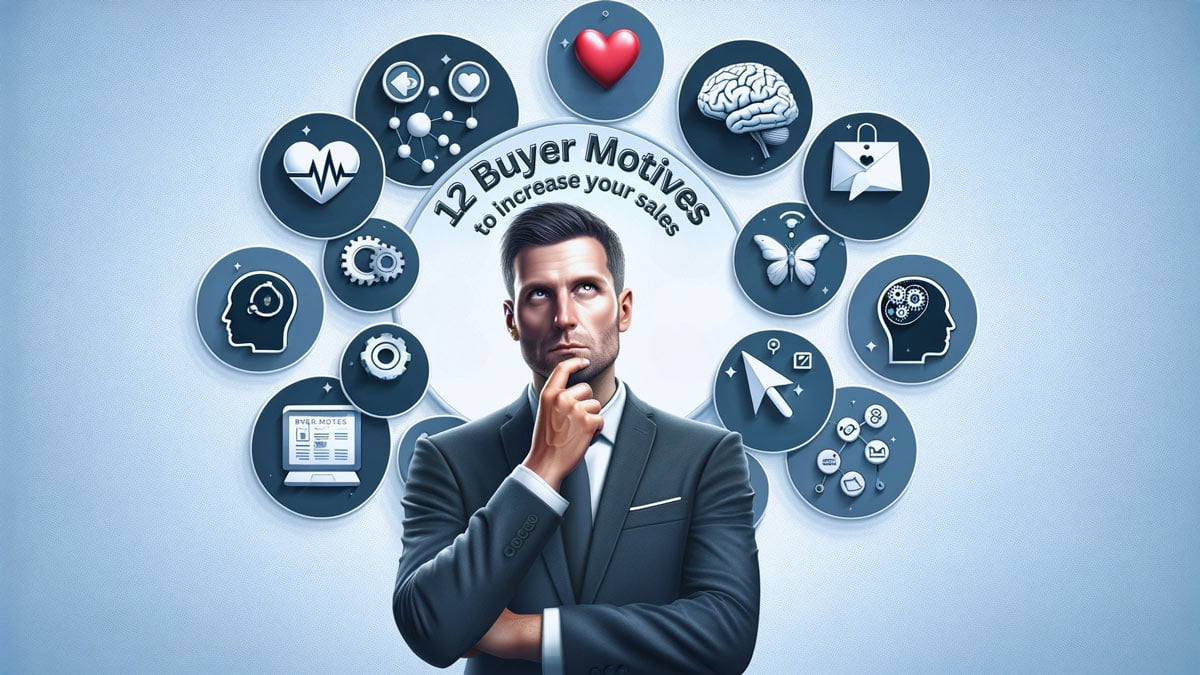Table of Contents
If you could already know what drives your customers to purchase something, wouldn’t sales be much easier?
So in this blog, I’ll cover 12 such buyer motives that you can use to tailor your sales strategies to align with their needs and wants.
Key Takeaways :
12 Types of Buying Motives
- Financial Gain : Businesses want to increase profits and reduce costs. Show how your product delivers ROI and saves money.
- Need : Uncover and address your prospect's explicit needs and hidden needs with your solution
- Acceptance : Tap into the fear of missing out by showing how your solution aligns with industry trends and helps them fit in the society.
- Fear : Identify risks your prospect fears and position your product as the solution to mitigate those risks.
- Health : Emphasize how your offering improves employee health, wellbeing and productivity over the long term.
- Pleasure : Convey the exclusivity, luxury and delight the customer will feel from owning and using your premium product.
- Impulse : Use urgency, FOMO and attractive offers to trigger instant purchases.
- Aspiration : Inspire prospects by connecting your product to their growth ambitions and showing how you help achieve their vision.
- Status : Associate your product with exclusivity, quality craftsmanship and aspirational branding that enhances the customer's image.
- Self-Improvement : Demonstrate how your offering develops skills, drives competitiveness and leads to business growth.
- Quality : Emphasize on the quality of your product by highlighting durability, reliability and performance.
- Practicality : Showcase ease of use, integration, customization and excellent support that solves daily business challenges.
What Are Buying Motives?
Buyer motive refers to the reasons or motivations behind why a person decides to make a purchase.
It encompasses the various emotional, psychological, and practical factors that influence a consumer’s buying decision.
There are many different types of buyer motives.
Some people buy things because they need them, plain and simple. But often, our reasons for buying are more about our feelings and desires.
We might buy things because they:
- Help us make or save money
- Make us feel happy or excited
- Help us to fit in or feel like we belong
- Make us feel safe or secure
- Let us dream and aspire to be better
- Make our life better
Why Understanding Buyer Motives is Important?
Understanding buyer motives is crucial because it’s like having a roadmap to a customer’s mind.
It tells you why people decide to buy something.
This understanding is key for anyone selling a product or service.
The other reasons why knowing buyer motives is
Tailored Marketing: When you know why people buy, you can create ads and messages that speak directly to them. It’s like talking their language.
- Better Product Development: Understanding motives helps you make products that people actually want. It guides you to add features or make changes that meet your customers’ desires or needs.
- Improved Customer Relationships: When you understand why your customers buy, you can connect with them better.
- Effective Sales Strategies: Knowing buyer motives lets you plan how to sell better. You can focus on the benefits that really matter to your customers.
- Increased Customer Satisfaction: When you meet the real needs and desires of your customers, they’re happier with what they buy.
- Staying Ahead of Competition: When you understand buyer motives, you can offer something better or different than what others are selling.
Facing Sales Challenges That's Affecting Your Revenue Growth?
Request a 100% free “no obligation” sales consulting call where we will understand your current sales challenges and help you with proven methods to boost your sales and grow your revenue.
(Already 100+ B2B companies have seen growth in their sales and revenue)
12 Types of Buying Motives
1. Financial Gain
When we talk about financial gain in the B2B world, it’s all about the bottom line.
Companies are always looking for ways to increase profits and reduce costs.
It’s a simple yet powerful motive.
Financial gain drives business decisions, from small startups to large enterprises.
In B2B sales, if you can show how your product or service boosts profits or cuts expenses, you’re speaking the language of financial gain.
There are 2 aspects of financial gains that drives financial motive
- ROI
- Cost Saving
ROI, or Return on Investment, is a simple concept: how much return the company will get compared to what they spend on your product or service?
Returns can be in terms of revenue growth, increased productivity, better performance etc all eventually contributing to making more money.
And cost savings is another big part of financial gain.
It’s about spending less but getting more.
Example
Let’s take cloud computing solutions as an example.
Many businesses have moved their data and applications to the cloud.
Why? Because it often turns out cheaper than maintaining their own servers.
They don’t need to buy expensive hardware or hire a team to manage it.
Plus, they get the bonus of accessing their data from anywhere. It’s a win-win.
Here's how you can sell on Financial Gains
- Quantify the Benefits: When you pitch, put numbers on the table. Show how much money your client could save or earn by using your product or service. Use simple, clear examples.
- Tailor Your Approach: Understand the specific financial goals of each client. Are they looking to cut costs, or are they more interested in boosting revenue? Your pitch should align with their objectives.
- Use Case Studies: Share stories of how other clients have financially benefited from your offering. Real-life examples can be very persuasive.
- Simplify the Complex: Financial discussions can get complicated. Keep your explanations straightforward and easy to understand. Use clear, simple language.
- Offer a Trial or Demo: Sometimes seeing is believing. Offer a trial period or demo so potential clients can witness the financial benefits first-hand.
- Highlight the ROI: When you’re selling, always keep the ROI in the front. Show clear figures and stats that explain how your product or service is an investment, not an expense.
- Future Forecasting: Talk about the long-term benefits. How will your product continue to provide financial gains in the future. This can set you apart from competitors offering short-term solutions.
2. Need
A need always arises if a prospect is facing a problem and looking for a solution to solve it.
In B2B sales, a need isn’t just a simple desire; it’s a critical requirement that your product or service can fulfil.
This could be something they know they need (explicit) or something they don’t realize yet (implicit).
As a sales professional it’s your job to uncover these needs and show how your solution fits perfectly.
Example
Imagine you’re selling project management software.
A company might know they need a tool to track tasks (explicit need).
But, through discussion, you discover they also need something to improve team communication, something they hadn’t thought of (implicit need).
By addressing both these needs, you make a stronger case for your product.
Here's how you can sell on Need
- Listen More, Talk Less: Spend time listening to your customers. Understand their day-to-day operations, challenges, and long-term goals.
- Ask the Right Questions: Develop a set of open-ended questions that help you dive deeper into their business processes. This helps uncover needs as well as the need behind the need.
- Educate and Inform: Sometimes clients don’t know what they need until it’s shown to them. Be informative about how your product can introduce new advantages to their business.
- Tailor Your Solutions: No two businesses are the same.
Customize your pitch to align with the specific needs of each client. Show them you understand their unique challenges. - Use Simple Examples: Explain how your product meets their needs with easy-to-understand examples. This makes it more relatable.
- Educate on Industry Trends: Sometimes clients aren’t aware of the latest trends that could impact their business. By being a source of this information, you can help them identify needs they haven’t recognized.
3. Acceptance
The need for acceptance is often linked to how people perceive themselves in their society.
This is about ensuring that a person feels recognized, up-to-date, and in line with society standards and trends.
Acceptance is about the fear of missing out (FOMO) and the desire to be part of a group or trend.
It’s showing customers how your product or service can make them part of the ‘in-crowd’, keeping them competitive and relevant.
Customers always want to feel that they belong to a community and are keeping pace with their peers.
They worry about falling behind or being seen as outdated.
This is especially true in industries where staying on top of trends is crucial for success.
Selling a product or service that helps a business stay current can tap into this need for acceptance.
Example
Imagine you’re selling the latest technology solution, maybe a new software platform that’s gaining popularity in the market.
This product is not just a tool; it’s a ticket to being part of a modern, forward-thinking group of businesses.
Using this technology signals to others in the industry that the company is up-to-date and innovative.
Here's how you can sell on Acceptance
- Highlight Industry Trends: Show how your product fits into current industry trends. Explain how using your product keeps them at the forefront of their sector.
- Use Social Proof: Share stories of other respected companies in their industry who have adopted your product. This demonstrates that they will be in good company.
- Create a Community Feeling: If possible, invite them to join user groups or community events related to your product. This reinforces the feeling of being part of a group.
- Discuss the Risk of Staying Behind: Talk about the potential risks or disadvantages of not keeping up with industry standards or trends.
- Emphasize Innovation: Position your product as innovative and cutting-edge. This can appeal to their desire to be seen as modern and progressive.
4. Fear
In sales addressing fear can be a powerful approach.
Fear can stem from things like market competition, technological obsolescence, security risks, or operational failures.
It’s about understanding these fears and presenting your product or service as a way to safeguard against them.
Effective B2B sales strategies involve recognizing these fears and demonstrating how your offerings can mitigate them.
Example
Consider you’re selling cybersecurity solutions.
Businesses today fear data breaches and cyber attacks, as these can lead to significant financial loss and damage to reputation.
Your sales pitch would focus on how your cybersecurity solution protects against these threats, emphasizing the advanced protection features and the potential risks of not having adequate security measures.
Here's how you can sell on Fear
- Understand the Client’s Specific Fears: Every business has unique concerns. Understand these specific fears through industry research and direct communication.
- Educate About Risks: Inform clients about potential risks in their industry and how these could impact their business. Use real-world examples where relevant.
- Present Your Solution as a Safeguard: Position your product or service as a protective measure that can prevent or minimize the impact of these fears.
- Use Trustworthy Data and Statistics: Back up your claims with credible data. This adds weight to your argument and builds trust.
- Show Empathy: Demonstrate understanding and empathy for their concerns. This helps build a relationship and shows you care about their business wellbeing.
- Discuss Long-term Implications: Talk about the long-term implications of not addressing these fears and how your product can offer long-term solutions.
- Ensure a Consultative Approach: Rather than using fear as a scare tactic, adopt a consultative approach to help them understand their risks and how you can help.
5. Health
For many companies focusing on health is becoming more important than ever.
We’re talking about products and services that can improve well-being and safety in the workplace.
This is not just about physical health, but also mental and emotional well-being.
Companies today are looking for solutions that keep their teams healthy, because a healthy team is more productive and happier.
Example
Consider you’re selling an Employee Experience Software designed to track the overall employee well-being in the workplace.
This software appeals to businesses that are increasingly aware of the importance of employee health for overall productivity and retention. By choosing this solution, companies are not just investing in a tool; they’re investing in their workforce’s health and satisfaction.
When you sell this software, you’re offering more than just efficiency and productivity; you’re offering a pathway to a healthier, more engaged, and happier workforce.
Here's how you can sell on Health
- Highlight the Long-Term Benefits: Emphasize how your product contributes to long-term health and well-being. Show the big picture of how a healthy workplace leads to fewer sick days and higher productivity.
- Use Real-Life Success Stories: Share stories of other businesses that have seen improvements in employee health and morale by using your product. This makes your case more convincing.
- Educate on Latest Health Trends: Stay informed about the latest trends in workplace health and well-being. Use this knowledge to show your clients that you understand their needs and can provide modern solutions.
- Provide Demonstrations and Trials: Let potential clients see and experience the health benefits of your product first-hand. This can be a powerful selling point.
- Educate on the Health Risks of Ignoring These Needs: Sometimes, businesses might not realize the health risks associated with their current setup. Educate them on the potential risk of neglecting this.
- Promote Holistic Well-being: Expand the conversation beyond physical health. Discuss how your product or service can contribute to mental and emotional well-being, which is just as important for a productive work environment.
6. Pleasure
In sales, the idea of pleasure might seem out of place at first.
But think about it – people always want to feel good about their purchases.
Pleasure in this context is about more than just enjoying a product.
It’s about the satisfaction and pride that comes with owning something special, something that sets the business apart.
This can be a luxurious item or a service that offers an exclusive experience.
Unlike practical or need-based purchases, buying for pleasure is about the emotional gratification and the joy of experiencing something delightful.
Example
Let’s say you’re selling premium office furniture. This isn’t just about chairs and desks. It’s about creating an environment that feels sophisticated and top-notch.
When clients or partners walk into an office with these kinds of interiors, they get a message about the company’s standards and taste.
So here you need to highlight more on the quality, premiumness and exclusivity of your furniture.
Here's how you can sell on Pleasure
- Focus on the Experience: Talk about the experience of using your product. How does it make the user feel? What kind of environment does it create?
- Highlight Exclusivity: Emphasize the uniqueness of your product. What makes it stand out? Is it a design that can’t be found elsewhere, or maybe it’s made by a well-known designer?
- Use Visuals Effectively: High-quality images and videos that showcase the luxury and sophistication of your product can be very persuasive.
- Appeal to the Senses: Describe not just how the product looks, but also how it feels, sounds, or even smells. Sensory details can make the pleasure aspect more real.
- Showcase the Quality: Go into detail about the craftsmanship, materials, and technology that make your product premium.
- Offer Personalization: If possible, offer customization options. Personalization can add to the feeling of exclusivity and luxury.
- Provide First-Class Service: Your sales process should reflect the quality of your product. Offer exceptional customer service that makes the buyer feel valued and special.
- Leverage Social Proof: Use testimonials and case studies from other high-profile or satisfied clients to build credibility.
- Create an Atmosphere of Sophistication: In every interaction, convey a sense of sophistication and luxury that aligns with your product.
7. Impulse
Impulse buying is driven by the immediate appeal or the urgency of a product or service.
Usually, customers will get caught up in the heat of the moment and make instant purchase decisions.
Such a decision can be driven by excitement, urgency or fear of missing out (FOMO).
In fact according to GITNUX MARKETDATA REPORT 2023 – around 60% of people make a reactive purchase due to FOMO
So it’s about creating a situation where the decision to buy feels urgent and necessary.
This could be through limited-time offers, unique features, or a sudden opportunity that seems too good to miss.
It’s about making the buyer feel they need to act now.
Example
Imagine you’re selling a software upgrade that offers new features.
You introduce it as a limited-time offer, available only for the next few days at a special price.
This creates a sense of urgency.
Businesses feel compelled to act quickly to take advantage of the offer, driven by the fear of missing out on something beneficial.
Here's how you can sell on Impulse
- Create a Sense of Urgency: Use time-bound offers or limited availability to create a sense of urgency. This encourages quick decision-making.
- Highlight Immediate Benefits: Emphasize the immediate advantages of your product. How will it help the business right away?
- Use Attractive Offers: Special deals or discounts can trigger impulse buying. Make these offers attractive and hard to pass up.
- Leverage the Fear of Missing Out (FOMO): Play on the fear of missing out on a great opportunity. Show how acting fast can bring significant benefits.
- Make Buying Process Easy: Simplify the buying process. The easier it is to purchase, the more likely an impulse buy will occur.
- Use Engaging Visuals and Messaging: Catch the buyer’s attention with engaging visuals and persuasive messaging that highlight the immediacy of the offer.
- Emphasize Exclusivity: Make the buyer feel they are getting access to something exclusive or unique.
- Follow Up Promptly: After an initial expression of interest, follow up quickly to maintain the sense of urgency and close the sale.
8. Aspiration
When individuals buy based on aspiration, they’re not just acquiring a product or service they’re investing with a vision for self-improvement and a better future.
Aspirational purchases are rooted in the desire for personal growth and improvement.
Whether it’s signing up for a gym membership, enrolling in online courses, or obtaining paid certifications, these decisions stem from a sincere ambition to better oneself.
Unlike purchases driven by fear or the pursuit of pleasure, aspirational buying is about taking proactive steps towards a desired personal transformation.
Here's how you can sell on Aspiration
- Show Potential Growth: Emphasize how your product or service can contribute to their personal and professional growth.
- Use Success Stories: Share stories of people who have achieved their aspirations by using your product.
- Connect to Career Advancement: If applicable, discuss how your product can lead to new career opportunities or advancements.
- Focus on the End Goal: Talk about the long-term benefits and the end goals that the product helps achieve.
- Use Motivational Messaging: Craft your marketing messages to be motivational and inspiring, encouraging prospects to strive for their best selves.
- Offer Support and Resources: Show that you offer the support and resources needed to help them stay the course and achieve their aspirations.
- Personalize the Experience: Tailor your approach to fit the individual’s specific aspirations and goals.
- Discuss Skill Development: Highlight how your product or service helps in developing new skills or improving existing ones.
- Provide Evidence of Effectiveness: Use data, testimonials, or endorsements to prove the effectiveness of your product in aiding self-improvement.
- Inspire Confidence: Make them feel confident about their ability to achieve their aspirations with the help of your product.
9. Status
For customers, status often serves as a crucial motivator in their purchasing decisions.
The products or services they choose are seen as reflections of their personal brand, success, and position in their professional or social circles.
Customers are often driven by the desire to be recognized and respected by their peers.
Purchasing and using high-status products is one way to signal success, sophistication, and an understanding of the finer things in life.
Whether it’s the latest high-end gadget, a luxury car, or an exclusive membership, these purchases serve as badges of honour, showcasing their achievements and taste.
For businesses when they invest in products that boost their status, they’re looking to be seen as leaders, innovators, or premium brands.
As a salesperson, you need to show how what you offer can enhance their prestige and reputation.
Example
Consider the purchase of a luxury watch.
For a customer, this watch is more than a device that tells time.
It’s a symbol of prestige, an indicator of their success and standing.
Owning a luxury watch sets them apart, making a statement about their attention to quality, appreciation of craftsmanship, and connection to a tradition of excellence.
The brand, design, and heritage of the watch play into their personal narrative, enhancing their status among peers.
Here's how you can sell on Status
- Highlight Exclusivity: Emphasize how owning this product places them in an exclusive group of discerning individuals.
- Use Branding Effectively: Show how the branding of your product aligns with their desire to be seen as a premium individual or company.
- Showcase Exclusive Features: Point out features of your product that are unique or superior to the competition. This exclusivity enhances status.
- Focus on Quality and Design: Discuss the superior craftsmanship, materials, and attention to detail that make the product stand out.
- Align with Their Aspirations: Understand and align your product with their personal or professional aspirations and how it enhances their image.
- Tailor Your Sales Approach: Your sales approach should match the premium nature of your product. Offer a high-quality, personalized buying experience.
- Use Media Coverage: If your product has been featured in reputable publications or media outlets, use this as a testament to its status-enhancing qualities.
10. Self-Improvement
Self-improvement is another powerful motive in sales.
When a customer invests in self-improvement, they’re looking to grow, learn, and become a better self.
Your role is to show them how your solution can help them reach these goals.
This could be through training programs, innovative technologies, or services that enhance their skills or capabilities.
From business this would mean training employees, updating technology, or improving processes.
They want to keep up with industry changes and be the best in their field.
Example
Let’s take an example of selling sales training service.
Since we’re into providing corporate sales training programs , I think this would be the most relevant example.
Companies that look for such training programs are in a way investing in self improvement of their sales team so they could perform better.
A company would choose a sales training program to enhance their sales team’s skills, communication, and confidence, ultimately aiming for improved performance.
This investment in their team’s development is a clear commitment to both their employees’ growth and the company’s overall success.
Here's how you can sell on Self Improvement
- Highlight Skill Development: Emphasize how your product or service can help develop new skills within their team. Show the direct benefits of these new skills on their business.
- Showcase Success Stories: Share examples of other businesses that have used your product to improve themselves. Real-life success stories are very convincing.
- Talk About Competitive Advantage: Explain how self-improvement can give them an edge over their competitors. Businesses want to know how your solution can make them stand out.
- Focus on Long-term Benefits: Discuss how investing in self-improvement now can lead to long-term gains for the business, such as increased efficiency or higher employee retention.
- Promote Continuous Learning: Stress the importance of ongoing learning and development in the modern business world, and how your product facilitates this.
11. Quality
According to Hubspot, product quality is the top factor (56%) that influences a purchase decision
When customers choose a product or service, they’re looking for something that won’t let them down. Quality here means durability, reliability, and top-notch performance.
A high-quality product not only does its job well but also lasts longer, ensuring that businesses get the most out of their investment.
High quality is more than just a good product. It’s a promise, a statement that says, “This product will deliver as expected every time.” It’s about trust.
When a company invests in a high-quality product, they are investing in something that will contribute positively to their operations.
Usually quality plays an important role in industries like – Manufacturing, Automotive, Medical Device, Construction, Consumer Goods and Telecom industry.
Of course quality is important for all the products but these industry are specifically quality driven.
Example
Take, for example, industrial equipment.
This equipment needs to perform under tough conditions consistently.
When selling such equipment, the focus is on how well it’s made, the materials used, the technology behind it, and its track record for reliability.
Companies depend on this equipment to keep their operations running smoothly, so they are willing to invest more for better quality.
Here's how you can sell on Quality
- Emphasize Durability and Reliability: Talk about how your product is built to last and how reliable it is. Share statistics or data that back up these claims.
- Use Testimonials and Case Studies: Share stories from satisfied customers who can vouch for the quality of your product. This builds credibility.
- Highlight Expert Craftsmanship or Technology: If your product is made using advanced technology or by skilled craftsmen, make sure your clients know this. It sets your product apart.
- Demonstrate the Product in Action: If possible, show your product being used in real-life scenarios. This can illustrate its quality more effectively than just talking about it.
- Discuss Long-term Cost Savings: While high-quality products might be more expensive upfront, they can save money in the long run due to less breakdowns or repairs.
- Offer Guarantees or Warranties: Guarantees and warranties can give clients confidence in the quality of your product.
- Show the Consequences of Low Quality: Sometimes, clients might not realize the risks of choosing lower-quality options. Educate them on the potential long-term costs and issues.
12. Practicality
When we talk about practicality in, we’re focusing on how useful and functional a product or service is in the everyday operations of a business.
Businesses are always on the lookout for solutions that make their work easier, more efficient, and more effective.
Practicality is about offering them just that – a straightforward, no-nonsense solution that solves their problems and streamlines their processes.
Here's how you can sell on Practicality
- Show the Ease of Use: Emphasize how easy your product is to use. Show that it won’t take much time for their team to learn and adapt to it.
- Demonstrate Efficiency Gains: Illustrate how your product saves time or resources. Use specific examples or case studies to show how it has helped similar businesses.
- Ease of Integration: Discuss how well your product can integrate with other tools or systems they already use. Seamless integration is a key aspect of practicality.
- Offer Demos or Trials: Let potential clients experience your product firsthand. A demo or trial period can prove its practical value.
- Give Customization Options: If your product is customizable, make sure to highlight this. Adaptability to different business needs enhances practicality.
- Provide Excellent Customer Support: Offer strong after-sales support. Practical solutions come with the assurance of help when it’s needed.
- Use Real-world Scenarios: Explain how your product works in everyday situations. Real-world applications can make the practical benefits more tangible.






